- No products in the cart.
Omeprazole-Teva capsules. kish.rastv. 40mg 28 pc
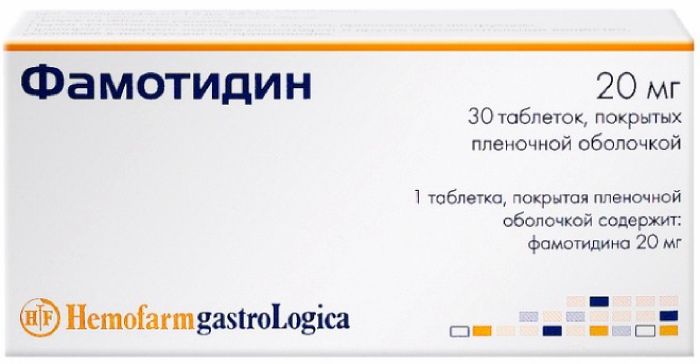
Famotidine tab p / 20 mg of 30 pcs, Hemofarm
$1.56
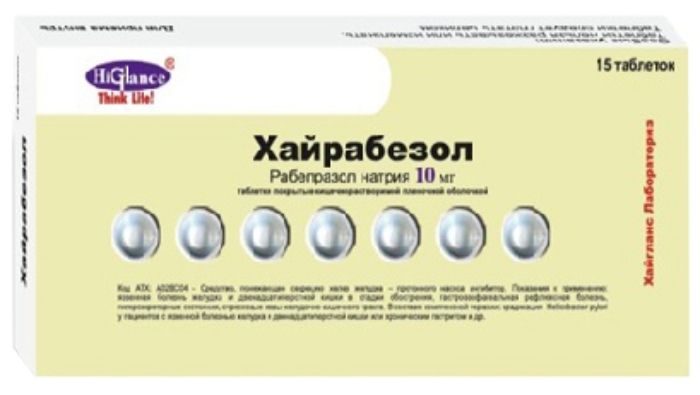
Hayrabezol tab n / an kish.rastv. 10 mg 15 pcs
$8.00
$3.75
Omeprazole-Teva capsules. kish.rastv. 40mg 28 pc
Description
Composition
Active substance:
1 capsule contains: Omeprazole 40.00 mg ;.
Excipients:
Sugar nibs [sucrose, starch syrup] 173.97 mg sodium carboxymethyl starch type A 10.20 mg 12.15 mg sodium lauryl sulfate, povidone-COA 19.31 mg, sodium phosphate dodecahydrate 1.34 mg Sodium Hydroxide 0.29 mg 28.84 mg of hypromellose, methacrylic acid ethyl acrylate copolymer [1: 1] 85.05 mg, 12.33 mg triethyl citrate, titanium dioxide (E 171) 6.62 mg. talc 0.38 mg.
Gelatine Capsule: cap: titanium dioxide (E 171) 0,74-0.784 mg, water 5,36-5,684 mg, gelatin 30,89-37,632 mg; Case: titanium dioxide (E171) 1,152-1.18 mg, water 8,526-8.56 mg, gelatin 49.098-56,448 mg. black ink (all dosages): shellac 24-27%, 23-26% * ethanol, isopropanol * 1-3% 3-7% propylene glycol, butanol * 1-3% 1-2% aqueous ammonia, potassium hydroxide 0,05-0.1%, water 15-18%, iron oxide black dye (E 172) 24-28%.
Description:
White opaque hard gelatine capsules № 0. Black ink applied to cover “O” on the body – “40”.
Contents of capsules – micropellets from white to white with yellowish or pinkish color.
Product form:
Enteric capsules of 40 mg.
6, 7, or 10 capsules per blister aluminum foil / PVC / PVDC and polyamide film / aluminum foil / PVC.
By 5 to 6 blisters or capsules to 2 or 4 to 7 blister capsules or 3 blisters with 10 capsules together with instructions for use in a cardboard box.
For 14, 28 or 30 capsules in a bottle of high-density polyethylene, a sealed lid of polypropylene with a desiccant (silica gel) and the control of the first opening. 1 bottle together with instructions for use in a cardboard box.
Contraindications
Hypersensitivity to omeprazole or any of the components; fructose intolerance; deficit sucrase / isomaltase; glucose-galactose malabsorption; simultaneous application with clarithromycin in patients with hepatic failure; atazanavir, St. John’s wort, erlotinib, posaconazole.
Children under 2 years of age and with a body weight
Children under 4 years of age (in the treatment of duodenal ulcer caused by H. pylori).
For other indications – Children up to age 18 years.
Carefully.
Liver failure; renal failure; osteoporosis; simultaneous application of clarithromycin, simultaneous application of clopidogrel, itraconazole, warfarin, cilostazol. diazepam, phenytoin, saquinavir, tacrolimus, voriconazole rifampin; large spontaneous weight loss; repeated vomiting, vomiting with blood; violation of swallowing; discoloration of feces (tarry stools); and in the presence of gastric ulcers (or suspected its presence) to the start of treatment to exclude malignancy because treatment can lead to masking symptoms and delay the correct diagnosis.
Dosage
40 mg
Indications
Adults: gastric ulcer and duodenal ulcers (treatment and prevention);
eradication of Helicobacter pylori in gastric ulcer and duodenal ulcer (in combination therapy);
NSAID-associated ulcers and erosions of the stomach and duodenal ulcers (treatment and prevention);
reflux esophagitis; symptomatic gastroesophageal reflux disease (GERD);
dyspepsia associated with acidity;
Zollinger-Ellison syndrome.
Children over 2 years: reflux esophagitis, symptomatic treatment of heartburn and acid regurgitation in GERD in children over 2 years of age and with a body weight of> / = 20 kg;
Children over 4 years: the eradication of Helicobacter pylori in duodenal ulcer (in combination therapy).
Interaction with other drugs
Active substances having a pH-dependent absorption.
Reduced gastric acidity when omeprazole may increase or decrease the absorption of pharmacologically active substances.
Nelfinavir. atazanavir
While the use of omeprazole can be observed a significant reduction in plasma concentration of atazanavir and nelfinavir.
The simultaneous use of omeprazole and nelfinavir contraindicated. The combined use of omeprazole (40 mg daily) reduces nelfinavir exposure by approximately 40% and average exposure pharmacologically active metabolite M8 is reduced by 75-90%. In collaboration can participate mechanism of inhibition of CYP1C19. Concomitant use of omeprazole with atazanavir is not recommended. The combined use of omeprazole (40 mg daily) and atazanovira 300 mg / 100 mg ritonavir in healthy volunteers resulted in a 75% reduction of atazanavir exposure. Increasing the dose of atazanavir to 400 mg of omeprazole does not compensate for the influence of exposure to atazanavir. Use of 20 mg of omeprazole per day with atazanavir 400 mg and 100 mg ritonavir in healthy volunteers resulted in approximately 30% reduction of atazanavir exposure and exposure at a comparable single dose of atazanavir 300 mg and 100 mg of ritonavir.
Digoxin
Concomitant treatment with omeprazole (20 mg daily) and digoxin in healthy volunteers the bioavailability of digoxin increased by 10%. Despite the fact that the glycoside intoxication in patients receiving omeprazole is not a part of the event, required increased monitoring, especially when treating elderly patients.
clopidogrel
The cross duration clopidogrel clinical trial in a loading dose of 300 mg (75 mg daily) and clopidogrel combination with omeprazole 80 mg was 5 days. Exposure to the active metabolite of clopidogrel is reduced by 46% (in the 1 st day) and 42% (on day 5) with coadministration clopidogrel and omeprazole. The average time for inhibiting platelet aggregation was reduced by 47% (24 h) and 30% (on day 5) with coadministration clopidogrel and omeprazole. In another study it was shown that clopidogrel and omeprazole at different times does not prevent their interaction that. probably due to the inhibitory effect of omeprazole on CYP2C19. According to the results of observational and clinical studies have provided conflicting evidence about the clinical impact of this PK / PD interaction in terms of severe cardiovascular events.
Other drugs
Absorption posaconazole, erlotinib, ketaconazole and itraconazole greatly reduced, respectively, their clinical efficiency deteriorates. co-administration of omeprazole must be avoided posaconazole or erlotinib.
Drugs metabolized by isoenzyme CYP2CJ9
Omeprazole moderately inhibits CYP2C19, the main enzyme metabolism of omeprazole. Thus, the metabolism of other drugs also metabolized by CYP2C19, can be reduced, and their systemic effects – enhanced. Examples of such drugs are R-warfarin and other vitamin K antagonists, cilostazol, diazepam and phenytoin.
cilostazol
In a crossover clinical study, in healthy volunteers receiving omeprazole 40mg increased Cmax and AUC cilostazol by 18% and 26%, respectively, and one of the active metabolites of cilostazol is 29% and 69%, respectively.
phenytoin
Monitoring of plasma concentrations of phenytoin recommended during the first two weeks after initiation of therapy in the case of omeprazole dose adjustment phenytoin; monitoring and subsequent dose adjustments should be made to phenytoin closure omeprazole treatment.
UNKNOWN mechanism of interaction
saquinavir
Co-administration of omeprazole and saquinavir / ritonavir is well tolerated in HIV infected patients and leads to a decrease in plasma concentrations of saquinavir to about 70%.
tacrolimus
Co-administration of omeprazole decreases serum concentrations of tacrolimus. There should be enhanced monitoring of tacrolimus concentrations and renal dysfunction (creatinine clearance) the dose of tacrolimus adjusted if necessary.
The influence of other drugs on the pharmacokinetics of OMEPRAZOLE
Inhibitors of the isoenzyme CYP2C19 and / or CYP3A4
Given the metabolism of omeprazole involving isozymes CYP2C19 and CYP3A4, medicines capable of inhibiting these enzymes (such as klarigromitsin and voriconazole) can decrease the serum concentration of omeprazole, increasing the rate of its metabolism.
Overdose
Symptoms: vomiting, abdominal pain, diarrhea, dizziness, depression, blurred vision, drowsiness, agitation, confusion, headache, increased sweating, dry mouth. nausea, arrhythmia.
Treatment: symptomatic therapy, hemodialysis is not effective enough. A specific antidote is not known.
pharmachologic effect
Pharmacological group:
Gastric glands secretion lowering agent – a proton pump inhibitor.
Pharmacodynamics:
Omeprazole is a racemic mixture of two enantiomers, reduces the secretion of hydrochloric acid by specific inhibition of the proton pump gastric parietal cells. When a single application is fast acting and has a reversible inhibition of gastric acid secretion.
Mechanism of action
Omeprazole is a weak base, becomes an active form in the acidic environment of the tubules parietal cells of the gastric mucosa layer where activated and inhibits the H + / K + -ATPase proton pump. Exerts a dose-dependent effect on the last step the hydrochloric acid synthesis, inhibits both basal and stimulated secretion irrespective stimulating factor.
Effect on acid secretion in the stomach
After oral administration of omeprazole 1 times a day is a rapid and effective reduction of the day and night hydrochloric acid secretion which reaches a maximum within 4 days of treatment.
In patients with ulcer duodenum 12 use 20 mg of omeprazole causing a steady decline in the 24-hour gastric acidity not less than 80%. The decrease mean maximum concentration of hydrochloric acid after stimulation of pentagastrin by 70% is achieved within 24 hours. The daily oral administration of 20 mg of omeprazole in patients with peptic ulcer disease duodenum 12 maintains the value of acidity at pH> 3, on average, for 17 hours.
The degree of inhibition of secretion of hydrochloric acid is proportional to the area under the concentration-time curve (AUC) of omeprazole and not proportional to the actual concentration of drug in the blood at any given time. During treatment with omeprazole tachyphylaxis has not been noted.
Omeprazole in vitro bactericidal effect on Helicobacter pylori. Eradication of Helicobacter pylori with omeprazole together with antibacterial agents accompanied by a rapid elimination of symptoms, a high degree of mucosal healing defects of the gastrointestinal tract and long-term remission of peptic ulcer, which reduces the possibility of complications such as bleeding as effectively as the constant maintenance therapy.
Pharmacokinetics:
Suction.
Omeprazole is rapidly absorbed from the gastrointestinal tract, the maximum plasma concentration is reached after 1-2 hours. The absorbed in the small intestine, usually within 3-6 hours. Bioavailability after a single oral administration is about 40% after continuous use once daily bioavailability increased to 60%. Simultaneous food intake does not affect the bioavailability of omeprazole.
Distribution.
Communication omeprazole plasma proteins is approximately 95%, the volume of – 0.3 L / kg.
Metabolism.
Omeprazole is completely metabolized in the liver. Main isoenzymes involved in the metabolism, – CYP2C19 and CYP3A4. Gidroksiomeprazol is a major metabolite, formed by the action of the isoenzyme CYP2C19. Metabolites of sulfone and sulfide have no effect on the secretion of hydrochloric acid.
Excretion. The half-life is about 40 minutes (30-90 minutes). About 80% is excreted as metabolites by the kidneys, and the rest – through the intestines.
Special patient groups.
In elderly patients (75-79 years), a slight decrease in the metabolism of omeprazole.
In patients with impaired renal function dose adjustment is required. The metabolism of omeprazole in patients with impaired liver function is slowed, resulting in the increase of its bioavailability.
In the treatment of children under the age of 1 year, the concentration of omeprazole in blood plasma were similar to those in adults.
Pregnancy and breast-feeding
The results of studies indicate no adverse effects on pregnancy, health of the fetus and newborn child. Omeprazole can be used during pregnancy with caution.
Omeprazole is excreted in breast milk. However, when used in therapeutic doses, effects on the baby are unlikely.
Conditions of supply of pharmacies
On prescription.
side effects
The frequency of side effects is classified in accordance with the recommendations of the World Health Organization: very often – at least 10%; often – at least 1% but less than 10%; infrequently – at least 0.1% but less than 1%; rarely – at least 0.01% but less than 0.1%; very rare (including sporadic cases) – less than 0.01%.
From the blood and lymphatic system: rarely – hypochromic microcytic anemia in children; very rarely – reversible thrombocytopenia. leukopenia, pancytopenia, agranulocytosis.
Immune system: very rarely – rash, fever, angioedema, bronchoconstriction, allergic vasculitis, fever, anaphylactic reaction / shock.
From the nervous system: often – headache, drowsiness, lethargy (listed side effects show a tendency to exacerbate the long-term therapy); rarely – insomnia, dizziness; rarely – paresthesia, confusion, hallucinations, especially in elderly patients or in severe disease; very rare – anxiety, depression, especially in elderly patients or those with severe disease.
On the part of the organ of vision: rarely – visual impairment, including reduction of the visual field, reduced sharpness and clarity of vision (usually disappear after discontinuation of therapy).
On the part of the ear and labyrinth disorders: rare – vertigo, disturbances of auditory perception, including “Tinnitus” (usually disappear after discontinuation of therapy).
Gastro-intestinal tract: often – nausea, vomiting, bloating, constipation, diarrhea, abdominal pain (in most cases, the severity of these effects increases with continued therapy), glandular fundus of the stomach polyps (benign); infrequently – (usually passes after cessation of therapy); seldom – taste disturbance, changing the language of color to brown-black appearance and benign cysts of the salivary glands, while the use of clarithromycin (effects are reversible after discontinuation of therapy), microscopic colitis; very rarely – dryness of the oral mucosa, stomatitis, candidiasis, pancreatitis.
Of the liver and biliary tract: rarely – changes in the indices of activity of “liver” enzymes (reversible); very rarely – hepatitis, jaundice, liver insufficiency, encephalopathy in patients with underlying diseases of the liver.
Skin and subcutaneous tissue disorders: rarely – urticaria, rash, pruritus, alopecia, erythema multiforme, photosensitivity, increased sweating; very rarely – Stevens-Johnson syndrome, toxic epidermal necrolysis.
On the part of the musculoskeletal and connective tissue disorders: uncommon – fractures of the vertebrae, wrist bones, femoral head (see “Cautions.”); rarely – myalgia, arthralgia; very rarely – muscle weakness.
On the part of the kidney and urinary tract: rarely – interstitial nephritis.
General disorders and at the injection site: rare – peripheral edema (usually disappear after discontinuation of therapy); rarely – hyponatremia; very rare – a gynecomastia; the frequency is unknown – hypomagnesemia (see “Cautions”.).
special instructions
Before therapy is necessary to exclude the presence of malignant process in the upper gastrointestinal tract, since omeprazole-Teva drug may mask the symptoms and delay the correct diagnosis. Reduced gastric acidity, including those using proton pump blockers, increase the number of bacteria in the digestive tract, which increases the risk of gastrointestinal infections.
Increasing CgA concentration can affect the results of the tests to detect neuroendocrine tumors. To prevent this influence must temporarily stop taking omeprazole for 5 days prior to the survey CgA concentration.
In patients with severe liver function impairment should regularly monitor the performance of “liver” enzymes during therapy with Omeprazol- Teva.
The drug-omeprazole Teva contains sucrose and therefore contraindicated in patients with congenital disorders of carbohydrate metabolism (fructose intolerance, failure sucrase / isomaltase, glucose-galactose malabsorption).
In the treatment of erosive and ulcerative lesions associated with NSAID, you should carefully consider the possibility of limiting or preventing NSAID to increase the effectiveness of anti-ulcer therapy.
The drug contains sodium, which should be taken into account in patients on a controlled sodium diet.
Should regularly assess the balance of risk and benefits of long-term (over 1 year) maintenance therapy with omeprazole-Teva. There is evidence of an increased risk of vertebral fractures, wrist bones, femoral head mainly in elderly patients, as well as in the presence of predisposing factors. Patients at risk for osteoporosis should ensure an adequate intake of vitamin D and calcium.
There have been reports of the occurrence of severe hypomagnesemia in patients receiving therapy with proton pump inhibitors, including omeprazole, over 1 year.
Patients receiving omeprazole therapy for a long time, especially in combination with digoxin or other drugs which reduce plasma content of magnesium (diuretic), requires regular monitoring of magnesium.
Omeprazole, as all drugs that reduce acidity, can lead to decreased absorption of vitamin B12 (cyanocobalamin). This should be remembered in patients with a reduced supply of vitamin B12 in the body, or with risk factors for malabsorption of vitamin B12 during prolonged therapy.
In patients treated with orally for a long time drugs, reducing the secretion of gastric glands, most often noted the formation of glandular cysts in the stomach. These phenomena are caused by physiological changes as a result of inhibition of the secretion of hydrochloric acid and subjected to reverse development against the background of continued therapy.
Снижение секреции соляной кислоты в желудке приводит к повышению роста нормальной микрофлоры кишечника, что. в свою очередь, может приводить к незначительному повышению риска развития кишечных инфекций, вызванных бактериями рода Salmonella spp. и Campylobacter spp., а также, вероятно, Clostridium difficile.
Effects on ability to drive and use machinery.
Учитывая возможность появления нежелательных эффектов со стороны центральной нервной системы и органа зрения, в период лечения омепразолом необходимо соблюдать осторожность при вождении автотранспорта и занятиях потенциально опасными видами деятельности, требующими повышенной концентрации внимания и быстроты психомоторных реакций.
Storage conditions
Store at a temperature not higher than 25 C. Keep out of reach of children.
Dosing and Administration
Капсулы принимают обычно утром, предпочтительно раздельно от еды, глотать целиком, запивать половиной стакана воды. Капсулы нельзя разжёвывать или измельчать. При затруднении глотания, содержимое капсулы после ее вскрытия можно смешать со слегка подкисленной жидкостью (сок, йогурт) и использовать в течение 30 минут.
Язвенная болезнь двенадцатиперстной кишки.
При обострении язвенной болезни двенадцатиперстной кишки рекомендуется принимать препарат по 20 мг 1 раз в сутки. Обычно продолжительность терапии составляет 2 недели, при необходимости возможно увеличение курса терапии ещё на 2 недели. Пациентам с язвенной болезнью двенадцатиперстной кишки, резистентной к лечению, обычно назначают препарат 40 мг 1 раз в сутки, в течение 4-х недель. Для профилактики рецидивов пациентам с язвенной болезнью двенадцатиперстной кишки – 20 мг 1 раз в сутки; в некоторых случаях может быть достаточно 10 мг 1 раз в сутки (необходимо применять капсулы, содержащие 10 мг омепразола). В случае необходимости дозу можно увеличить до 40 мг 1 раз в сутки.
Stomach ulcer.
При обострении язвенной болезни желудка рекомендуемая доза препарата составляет 20 мг 1 раз в сутки. Продолжительность терапии – 4 недели. В тех случаях, когда после первого курса применения препарата полное заживление не наступает, назначают повторный 4-недельный курс лечения. Пациентам с язвенной болезнью желудка, резистентной к лечению, обычно назначают препарат 40 мг 1 раз в сутки, заживление обычно достигается в течение 8 недель. Для профилактики рецидивов пациентам с язвенной болезнью желудка рекомендуют принимать препарат в дозе 20 мг 1 раз в сутки. В случае необходимости дозу можно увеличить до 40 мг 1 раз в сутки.
Режимы эрадикации Helicobacter pylori при язвенной болезни:
– омепразол по 20 мг, кларитромицин по 500 мг, амоксициллин по 1000 мг одновременно 2 раза в день в течение 1 недели;
– омепразол по 20 мг, кларитромицин по 250 мг (в качестве альтернативы 500 мг), метронидазол по 400 мг (или по 500 мг или тинидазол по 500 мг) одновременно 2 раза в день в течение 1 недели:
– омепразол по 40 мг 1 раз в сутки, а также амоксициллин по 500 мг с метронидазолом по 400 мг (или по 500 мг или тинидазолом по 500 мг) оба 3 раза в день на протяжении 1 недели.
В тех случаях, если после проведенного лечения пациент Helicobacter руlогi-позитивный, то возможен повторный курс лечения.
Лечение язвенно-эрозивных поражении желудка и 12-перстной кишки, связанных с приемом НПВП.
Рекомендуемая доза омепразола составляет 20 мг 1 раз в день. Курс лечения – 4 недели. Для пациентов, у которых не наступило заживление язвы, курс может быть продлен еще на 4 недели.
Профилактика язвенно-эрозивных поражений желудка и двенадцатиперстной кишки, связанных с приемом НПВП.
В качестве профилактики НПВП-ассоциированных язвенно-эрозивных поражений желудка и 12-перстной кишки у пациентов в группе риска (возраст более 60 лет, язвенно-эрозивные поражения желудка и 12-перстной кишки в анамнезе, кровотечения из верхних отделов ЖКТ в анамнезе) рекомендуемая доза – 20 мг омепразола 1 раз в день.
Лечение рефлюкс-эзофагита.
Рекомендуемая доза составляет 20 мг омепразола 1 раз в день. Курс лечения составляет 4 недели. Для пациентов, у которых не наступило излечение за этот срок, курс может быть продлен на 4 недели. При тяжёлом эзофагите рекомендуемая доза составляет 40 мг омепразола 1 раз в день, и курс лечения составляет 8 недель.
Для поддерживающей терапии у пациентов с рефлюкс-эзофагитом рекомендуемая доза омепразола составляет 10 мг 1 раз в день (необходимо применять капсулы, содержащие 10 мг омепразола). При необходимости доза может быть увеличена до 20-40 мг 1 раз в день.
Симптоматическое лечение ГЭРБ.
Рекомендуемая доза – 20 мг в день. Возможна индивидуальная корректировка дозы. Если симптомы сохраняются после 4 недель лечения в дозе 20 мг омепразола ежедневно, то требуется дальнейшее обследование.
Лечение неязвенной диспепсии.
Обычная доза составляет 10 мг (1 капсула) в сутки. Максимальная суточная доза препарата не должна превышать 20 мг. Максимальный курс лечения – 14 дней. Если в течение 2 недель не наблюдается облегчения симптомов или они усугубляются, необходимо обратиться к врачу.
Лечение синдрома Золлингера-Эллисона.
The dose is determined individually. Рекомендуемая начальная доза – 60 мг один раз в сутки. При необходимости дозу увеличивают до 80-120 мг в сутки. При дозе более 80 мг её следует разделить на два приёма.
Применение у детей старше 2 лет и массой тела > 20 кг при лечении рефлюкс- эзофагита и симптоматическом лечении изжоги и регургитации кислым при ГЭРБ У детей старше 2 лет с массой тела более 20 кг рекомендуемая доза – 20 мг 1 раз в день. Доза может быть увеличена до 40 мг 1 раз в день при необходимости.
Курс лечения при рефлюкс-эзофагите – 4-8 недель, при симптоматическом лечении изжоги и отрыжки кислым при ГЭРБ – 2-4 недели. При сохранении симптомов спустя 2-4 недели пациенту требуется дополнительное обследование.
Лечение язвенной болезни 12-перстной кишки, вызванной H. pylori у детей старше 4 лет.
При выборе соответствующей комбинированной терапии необходимо принимать во внимание официальные местные и национальные рекомендации с точки зрения бактериальной резистентности, длительность лечения (чаще всего 7 дней, но иногда может потребоваться до 14 дней) и соответствующие антибактериальные средства.
Лечение проводится под наблюдением специалиста.
У детей с массой тела 15-30 кг: применение в комбинации с 2 антибиотиками: омепразол – 10 мг, кларитромицин и амоксициллин у данной категории пациентов назначаются в режиме дозирования согласно инструкциям по применению кларитромицина и амоксициллина (применяют одновременно 2 раза в день в течение 1 недели).
У детей с массой тела 31-40 кг: применение в комбинации с 2 антибиотиками: омепразол – 20 мг, кларитромицин и амоксициллин у данной категории пациентов назначаются в режиме дозирования согласно инструкциям по применению кларитромицина и амоксициллина (применяют одновременно 2 раза в день в течение 1 недели).
У детей с массой тела более 40 кг: применение в комбинации с 2 антибиотиками: омепразол – 20 мг, кларитромицин и амоксициллин у данной категории пациентов назначаются в режиме дозирования согласно инструкциям по применению кларитромицина и амоксициллина (применяют одновременно 2 раза в день в течение 1 недели).
Режим дозирования у особых групп пациентов.
При печеночной недостаточности назначают по 10-20 мг (максимальная суточная доза 20 мг); при нарушении функции почек и у пожилых пациентов коррекции режима дозирования не требуется.
Information
Appearance may differ from that depicted in the picture. There are contraindications. You need to read the manual or consult with a specialist
Additional information
| Weight | 0.100 kg |
|---|---|
| Manufacturer | TEVA |

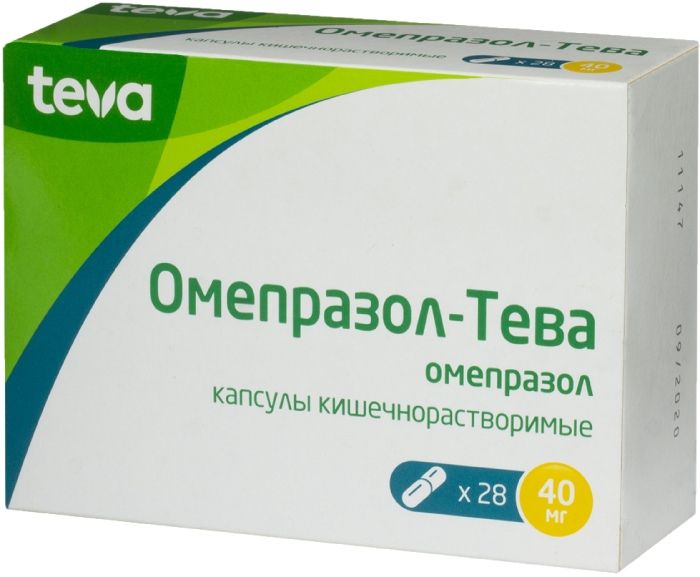

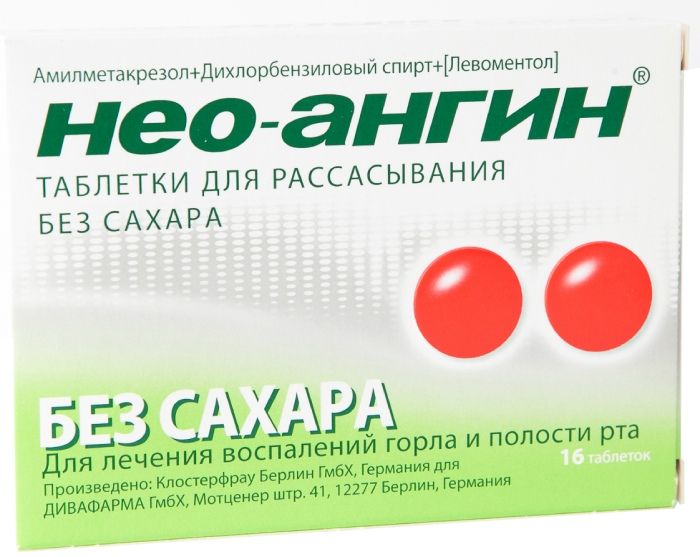


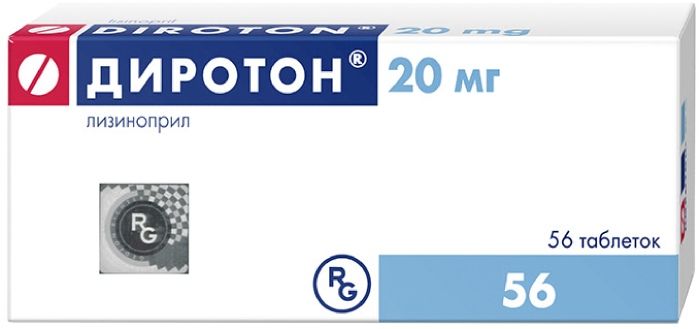
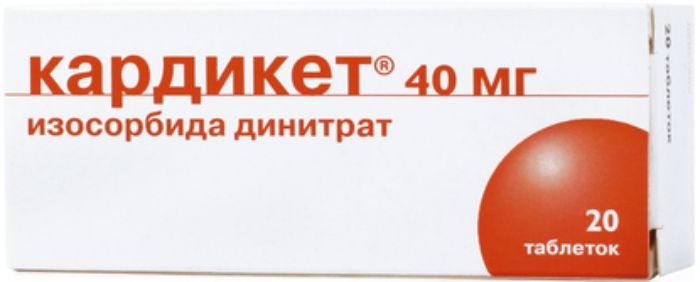




There are no reviews yet.